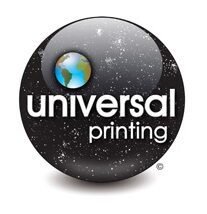Understanding Paper Weight… Mysteries Revealed!
A few months ago we posted a 2-part Blog about Choosing the Right Paper but we still get a lot of questions about one VERY confusing topic: Paper Weight and Thickness.
FACT: It’s complicated!
ANOTHER FACT: It’s complicated for NO GOOD REASON!
Don’t feel bad if it doesn’t make sense. There’s nothing wrong with you… it’s just that there are a lot of terms used in the world of paper. Some of them mean the same thing, and some of them don’t. But here’s the good news! Universal Printing is FILLED with people who love paper, know paper, understand paper, and deal with paper DAILY; and we’re more than happy to share anything we know about it with YOU!
Paper Weight Comparison Chart
Here’s a handy-dandy comparison chart to help you figure which paper weights are equivalent.

Dying to know more?
For the sake of this blog, we’re not going to talk about color, shade, texture, finish, or anything else like that. We’re JUST talking about weight and thickness. But to start, we’ll break it down to 2 main categories:
|
Text Bond |
Cover Cardstock |
Weight and Thickness are DIFFERENT
The different classes of text or cover each come with their own “weight” determined by Basis Weight. Basis Weight is the weight of 500 sheets, at the base size for that type of stock. Bond or Writing paper has a Base Size of 17” x 22”, so if 500 sheets weighs 20lbs than it’s called 20# Bond or 20# Writing no matter what size it’s cut down to. Offset and Text sheets have a Base Size of 25” x 38”, so if 500 sheets at that size weighs 50lbs, than it’s called 50# Offset or 50# Text.
You’ll notice, that in our comparison chart further down, the 20# Bond and 50# Offset are the same thickness, which now makes perfect sense, because the Base Size of Offset is over double the size for Bond… so the Basis Weight for Offset will also be more than twice the weight of Bond.
GSM – Grams per Square Meter
Whether you’re familiar with the metrics system or not, you probably know that it one of the principles is to keep the math simple and make all things equal. GSM is the metric systems classification for paper, because they don’t care about how it’s made or what it’s used for. They just want to know a simple way to determine volume. So one sheet of these same papers (20# Bond or 50# Offset) cut to 1 meter x 1 meter, will weigh 75 grams (which is 75gsm… grams per square meter). Again, this isn’t a measure of thickness…. but generally speaking, the more grammage a single sheet has at a fixed size the more density it has, which often relates to thickness of the sheet (but can also involve bulk and manufacturing process).
Again… it can get very complicated. If you’re interested in knowing even more, you’re welcome to explore some of our past blogs about paper. Or you can always speak with any member of our helpful staff.

Universal Printing
Offering quality printing and communications solutions to
Raleigh, Durham, Chapel Hill, and the Triangle since 1979.
www.universalprinting.com
Tags: business solutions, commercial printing, digital printing, offset printing, printing, printing services, tips and tricks

What weight in gsm would you advise for the cover of a book for children, matt, laminated ? I was mentioned 350gsm. Is it not too thick?